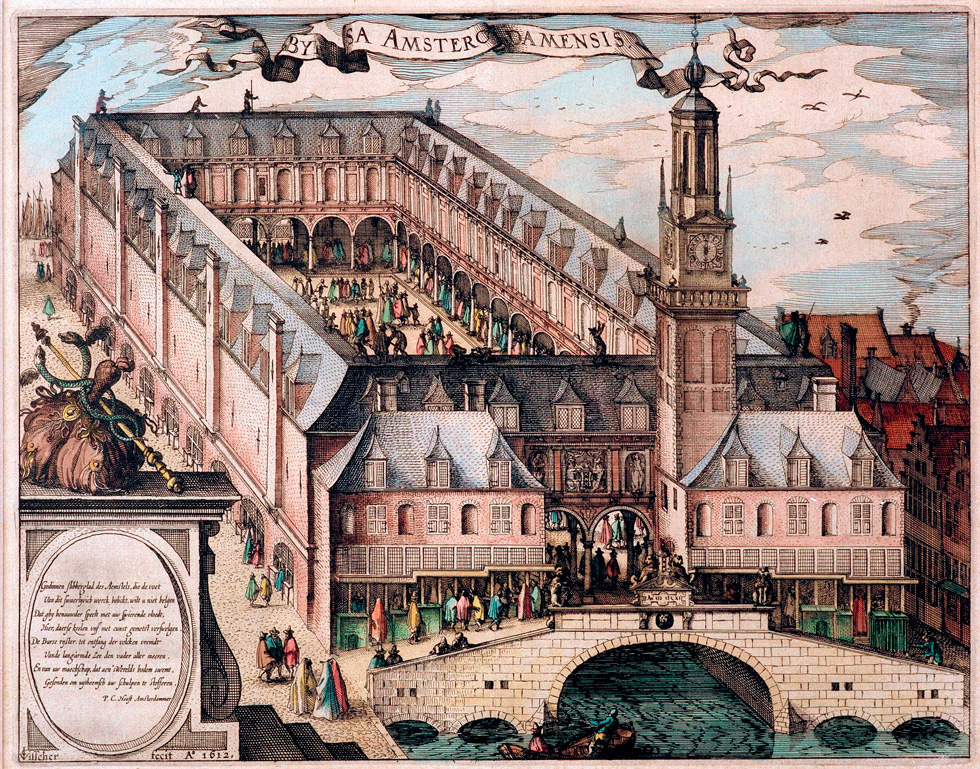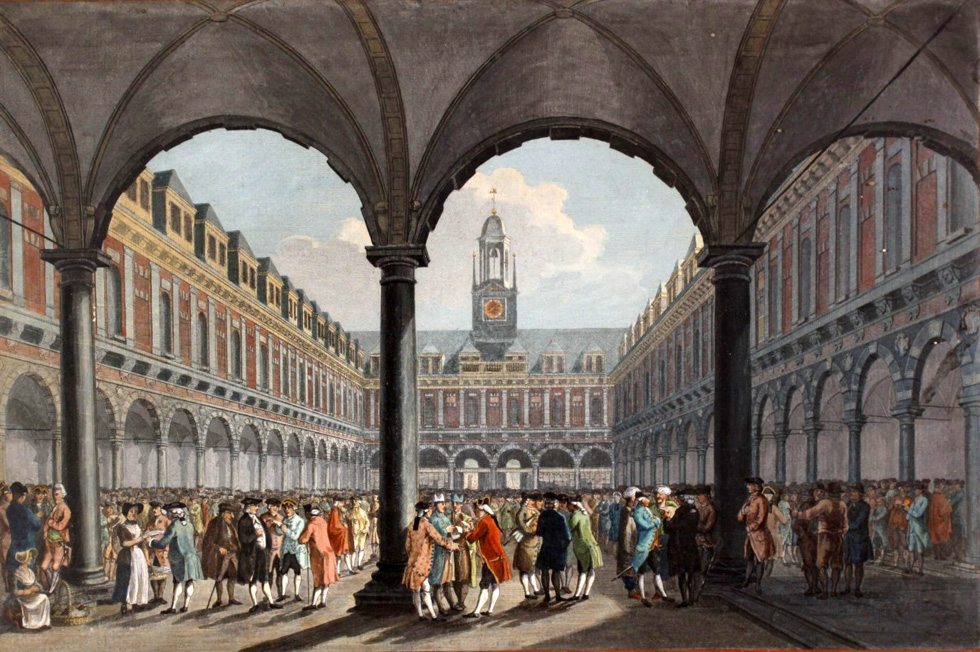
I frustratingly see APIs everywhere in a world where most do not even know what an API is while also simultaneously using them thousands of times each day. I see and hear the gears of this new digital world turning each day, and can’t help but share stories about what is happening around us while leveraging the stories of others to help me make sense of this moment. I was recently reading About Time - A History of Civilization in Twelve Clocks by David Rooney, and learned about the clock that was installed at the Beurs van Hendrick de Keyser, the first stock exchange in 1607. Ever since reading this book I have been thinking about the role that time plays in our endless technological march forward, how the Internet and APIs have shifted our sense of space and time, and ushered us into a new period of markets where we are the commodities and our lives are the next generation of financial products.
The Beurs van Hendrick de Keyser, the first stock exchange, was completed in 1611. The building was approximately sixty meters long and over 35 meters wide possessing forty-two numbered columns surrounded the center square without a roof that served as the trading floor. Merchants now had a well-known location to be found on any given day. The exchange was equipped with a clock tower to help guide the deals that these merchants made into specific hours of each day during the business week, ensuring that business was brought out of the coffee houses and into the market, which then set the tone for the pace of business that was increasingly spreading around the globe.

This first stock exchange in Amsterdam was the convergence of a couple things. It wasn’t the first market or exchange, but the first place where more complex financial products defined as stocks were bought and sold at scale. It wasn’t the first clock tower, but the first time that markets were being aligned with time at this scale, setting the pace of business we still experience today. By 1668, the clock tower was moved “center stage” at the Beurs van Hendrick de Keyser, showing how important time would play in this game.

We have been conditioned for the last 400+ years through the humming of markets and clocks ticking forward in unison, keeping us all in line each business day. As I think back to these gears perpetually spinning and marching forward, building, expanding around the globe over the last 400 hundred years I am left with the same feeling I have when I think about the API economy each day. When I think about global markets, complex financial products, and their relationship to time I am left hearing both the “Time” and “Money” tracks from the Pink Floyd Dark Side of the Moon album in my head. And when I think about all of this reduced to trillions of digital transaction daily using APIs I am left with a much faster pace and overwhelming electronic version of this familiar tune.

Every day the average person makes several thousand API calls. Our behavior and location is shaped through API calls. Our messages, images, videos, friends, family, and interests are all reduced to a series of API transactions each day. Our daily social frame rate is defined, executed, and measured using APIs. We are now the commodities and our lives have become complex financial products, with many, many derivatives. The clocks aren’t present to keep us doing business during a specific part of the day anymore, this is a 24/7 operation now. Time is just meant to keep us marching forward and sharing a collective rhythm as a series of digital marketplaces. Even with each day shaped by this new digital reality, it is still essential to create urgency and demand for what is next, and dictate what has already passed and is now just legacy.
APIs are automating and scaling, but also beginning to regulate markets. APIs are how digital products are being defined across all industries, but APIs are also being used to automate and govern the delivery of those digital products, while transforming end-users of these professional and personal digital products in complex financial products and their derivatives. In this new digital exchange, time is still standardizing how and when we do business-—even with it being 24/7 digital marketplace. We still do business within specific regions and timezones, pushing our APIs to the edge to meet customers where and when they are. You see time shaping how we do APIs, and the clock tower is still central to the exchange, it is just now baked into the heartbeat of our platforms, laptops, mobile phones, automobiles, and the networks they operate on.
This all has me thinking about where the next opportunity will lie in the cracks of time. Like there was when the telegraph, telephone, and Internet was introduced-—what that did to markets. I am guessing it doesn’t simply lie in speed of communication, but in the shape of communication and how time is applied as a bounded context to business transactions. Or I am guessing it will depend on the pace of change, being able to manage, respond, and recover from perpetual change. Meaning, can you see a new API appear, or possibly a specific property of an API appear before anyone else knows, and be able to understand how that new digital resource or capability fits into the overall landscape before anyone else can—then act. While other businesses operate according to the normal pace of time, you will be seeing change across the API landscape before anyone else can, finding the signal in the noise and consuming new resources as they become available. But, where it will really pay off is being able to produce new digital products in response to this API-driven awareness, and leverage APIs to accelerate the pace at which markets operate. Those who are both producers and consumers will dominate their industries.
